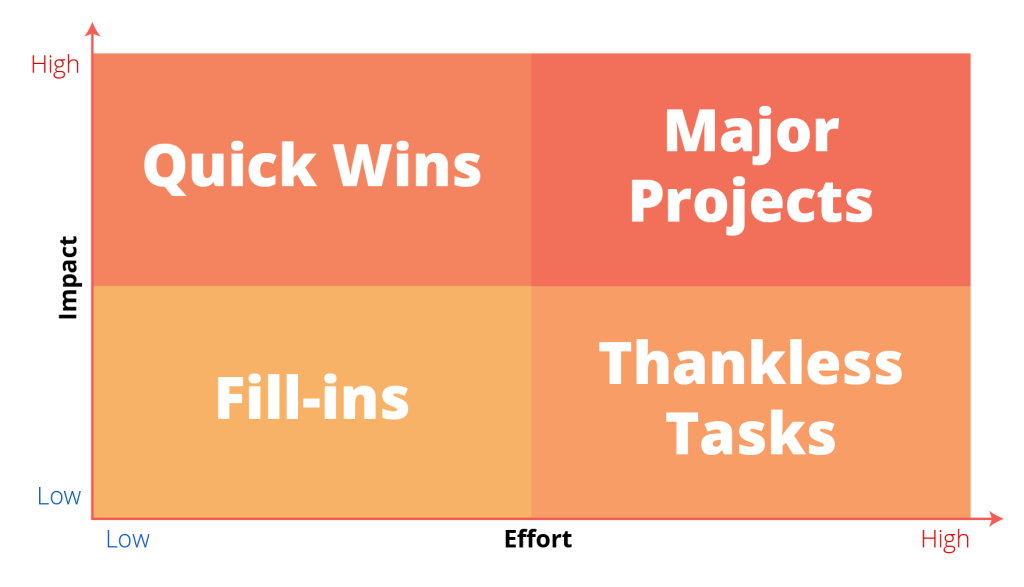
The reason you have customers is because they have a need to fulfil and your product or service seems to have just the right solution for them. Lucky you!
Unfortunately, this is where the real job only begins. It’s great that you have customers but they won’t stay with your business too long if you don’t meet their needs. And customer needs are constantly changing and evolving, so just because they needed what they got from you 5 months ago will not mean that they will need the same now.
What are customer needs?
First let’s define customer needs.
HubSpot defines a customer need as ‘a motive that prompts a customer to buy a product or service.’ As Collins dictionary defines it, “If you need something, or need to do something, you cannot successfully achieve what you want or live properly without it.”
So in short, a need is the compulsory and driving factor in any customer’s decisions. This means that if a product or service does not satisfy a customer’s need, that customer will likely walk away looking for the solution elsewhere.
It is important to note that not all customer needs will be directly communicated by the customers. This is very evident in User Experience Testing.
When conducting user testing UX designers always need to remember to not ask questions like ‘Would you like x instead of y?’. This is because a user may think they know what they need but really when it comes to completing a task their natural reaction leads them in a completely different direction.
This brings us to the next point.
Customer Needs VS Wants
Customer needs often get confused with customer wants. However they are not the same. As stated above, customer needs must be met, customer wants are extra desires that can be negotiated.
In sales, when a customer says they would like to buy a computer with minimum 16GB Ram because they work in photo editing, and they want it to be blue, they will not buy any blue computer that doesn’t have 16GB Ram. However, they might be willing to negotiate and buy a red computer with 32GB Ram.
The point here is that needs are much more important than wants and they are not the same. When the needs are met, the wants, even if they are not met, can be replaced with alternatives.
In our framework, one of the six emotional drivers is ‘You Know Me’ This driver demonstrates that you understand the customer and their specific needs and circumstances and will adapt the experience accordingly. It makes the customer feel important and valued, and builds a strong emotional bond.
Identifying Customer Needs
In order for you to be able to distinguish between needs and wants and successfully deliver a great experience to your customers you need to define and understand their needs.
There are a few ways you can identify customer needs.
Focus Groups
A focus group is a research method in which you bring a small group of people into the same room to discuss and share opinions/ ideas. The individuals attending your focus group should be your target audience or representatives of your target audience. This method is used to gain a better understanding of how your customers feel about your product or service and your whole brand.
With focus groups you can gain a lot of qualitative data that can help you better understand their needs and wants. You should observe not only their spoken answers, but the group dynamic and their body language, as it can reveal important information.
Social Listening
Social Listening is the practice of analysing the trends on social media platforms that your target audience is using. It includes reading, listening and understanding what questions they ask, what their pain points are and what they are interested in.
Social listening enables you to track every mention of your brand and how your customers feel about it. This is a huge advantage that we have today that we didn’t 20 years ago. Simply by reading comments on your posts or searching your name on any social media you can quickly see what people are saying and thinking about your company.
Surveys
A survey is a research method in which you ask a list of questions to a large sample of people. The main difference between surveys and focus groups is the sample size.
In order to get accurate results from a survey you need a significant number of participants. The questions will be answered by each participant individually without the option to discuss or share further opinion. Surveys are best used to gather quantitative data, however you may choose to include open ended questions, which will also gather qualitative data.
Surveys are a great tool to find out the general needs and wants of your customers on a much larger scale.
Keyword research
Keyword research is similar to Social Listening, however it focuses on finding and analysing search terms (keywords) that your customers use to find your products or services.
It is important as it can reveal your customers’ questions and how often they are asked. It can also help you identify how to best optimise your website so that your customers can organically get to it, ultimately choosing your brand as a solution to their problems.
Customer Needs Analysis
In order to identify your customer needs, once you conduct your research you need to analyse the gathered data. Meeting and exceeding your customers’ needs will allow you to build a stronger bond with them and build trust in your Emotional Piggy Bank™.
Step 1 – Sort your data accordingly.
Once you have your data gathered, the first step is to organise it into groups of similarities. The best way to do this is by organising it according to your customer target groups. More than likely you will have different groups you target. It could be divided demographically by age or gender or by something more specific like product choice, frequent/ infrequent purchasers etc.
All data that has been collected in paper format should be transferred to your digital system. This way you can add keywords to quickly identify your customer needs.
Step 2 – Analyse data & Leverage data from other sources (CRM systems)
When you have your data organised you should begin the analysis and compare with the data you already have from your CRM system.
For example, you could have found that there is a significant drop in your CSAT score at the checkout stage of the customer journey, and in your focus group you found that people are unsure what payment options provided mean and how to use them. You can correlate this information together to identify a specific need for improving the checkout section, better explanation of each payment option and the steps involved.
Step 3 – Identify Customer Needs
The two steps above will help you pin-point your customer’s needs and wants. All these needs and wants should fall into one of these 5 categories: Functionality, price, reliability, usability and compatibility.
Once you have identified what needs are met and not met across these categories you can begin to arrange them according to the Action Priority Matrix.

Step 4 – Plan
Prepare a plan on how to update customer journeys, products and services so that they meet your customer needs.
You will have a lot of work, so prioritisation will be the key to success. However, when you put processes in place to improve meeting your customers’ needs and wants you will see a significant rise in customer satisfaction, loyalty, advocacy and as a result your overall profits.
Remember: this process should be repeated systematically, in order for you to be able to keep up with the changing needs of your customers.
If you would like to learn more about customer needs and how to apply our Framework to achieve CX Excellence enrol in our Professional Diploma or Certificate in CX today.
